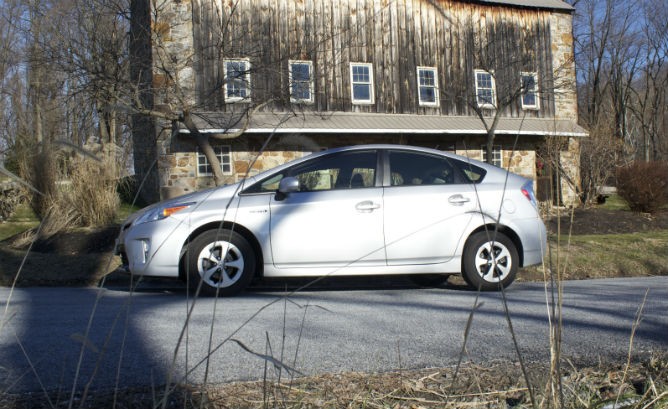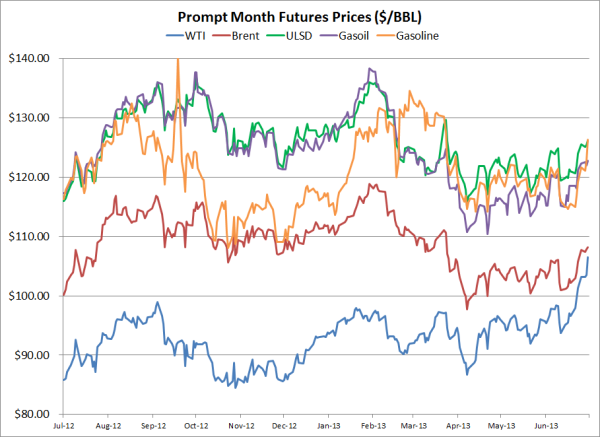How to Hedge Against Gasoline Price Increases
Post on: 22 Май, 2015 No Comment

When gasoline prices at the pump increased to the point where the cost was a major news item engendering backlash among the public, oil companies were sporting big profits. Consumers reacted by buying more fuel-efficient cars and traveling less, but there is another approach for investors an approach that mimics what commodities and hedge fund traders do. There are a few suggested approaches, but some work better than others.
One approach is to simply buy stock in the companies that are increasing prices to hedge against cost increases. The theory is that if prices of consumable goods increase to drive profits for the company, owning part of the company will turn those higher expenses to investment returns.
A quick check of gas price data and Exxon Mobils performance shoes that stock prices dont always correlate with an increase in gas prices, but Exxon Mobil did provide dividends to investors during the last major period of gas price increases, from December 2008 to now. Investors during this time would have received $5 per share in dividends. If you estimate youve paid $5,000 more in total gasoline costs since December 2008 than you would have if gas had remained at $1.70 per gallon and this is an assumption Ill continue to use here it would have taken 1,000 shares of XOM to earn that back in dividends. Those 1,000 shares would have cost a total of $80,000 in December 2008 and theyd be worth only $72,000 today.
This strategy would not have been very efficient. What about industry ETFs? The United States oil ETF, USO, would have seen performance not quite as bad as XOM over this period, but there would be no dividends. Investing directly in companies that profit from higher prices does not seem to be a winning strategy.
A bunch better choice would be an ETF that tracks gas prices closely, regardless of the stock performance of the companies involved with delivering gas to the consumer. Over this time period from December 2008 to today, UGA, an ETF that takes this approached, has increased 130%. Gas prices increased from about $1.70 to about $3.60 per gallon, or an increase of 111%. This seems to be the better approach for hedging against gasoline price increases. From an absolute dollar perspective, earning back the $5,000 in additional gasoline expense over this period would have required an initial investment of $3,850, a more reasonable down payment.
There are other ways to hedge gas prices, like selling put options on UGA. If youre willing to gamble that UGA will trade at a certain minimum price on a certain day in the future, you can take a profit to help offset your gasoline expenses. If you take that bet and UGA is not trading at that price, you could lose money on the trade, but youd be paying less at the pump, so youve saved money anyway. I think buying the ETF is a better idea for most investors than dealing with options.

Another option, in combination with investing, is to ensure youre getting the best prices for the gasoline you buy. It doesnt make too much sense to drive out of your way to get to the isolated station with the lowest price, but be aware of your options. Find the best gas credit card for you and use it to earn cash back, but be wary of stations that charge different prices depending on whether you use cash or credit .
If you are planning to buy a new car, consider cars rated with high gas mileage. The effects of these ratings arent linear; a 5 MPG upgrade from a 15 MPG vehicle to a 20 MPG vehicle has more of an effect on your finances than a 5 MPG upgrade from a 35 MPG vehicle to a 40 MPG vehicle, but its clear that a 40 MPG vehicle, while slightly better than 35 MPG, is a significant improvement over 15 MPG. Efficiency has its own environmental benefits beyond the cost of fuel, so some people may feel its worthwhile to buy fuel-efficient cars even if the higher prices make overall cost savings (including car price and gas) harder to achieve.
Right now, gas prices may not be the biggest financial concern for a family. The public now expects high prices despite not too long ago bemoaning when prices climbed above $1 per gallon. Transportation can be a significant expense for a family, though, particularly in locations where the career economy is based mostly on commutation, like New Jersey and California.
Published or updated August 24, 2011. If you enjoyed this article, subscribe to the RSS feed or receive daily emails. Follow @ConsumerismComm on Twitter and visit our Facebook page for more updates.














